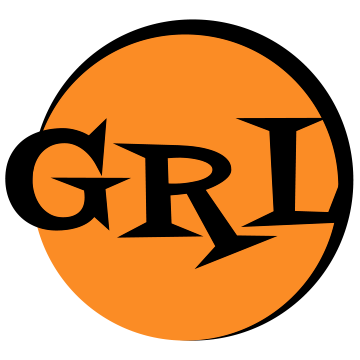More actions
Tweaks. |
Additions. |
||
| Line 1: | Line 1: | ||
{{Journal-Top}}<div style="padding-top: 30px;"> | {{Journal-Top}}<div style="padding-top: 30px;"> | ||
{{Center|{{Large|Ozymandias}}{{refn|The Egyptian pharaoh Ramses II was called Ozymandias by the Greeks. According to Diodorus Siculus, a first-century Greek historian, the following was written at the base of Ramses II statue—the largest in Egypt: “I am Ozymandias, King of kings. If anyone would know how great I am and where I lie, let him surpass any of my works.”}}<br /> | {{Center|{{Large|Ozymandias}}{{refn|The Egyptian pharaoh Ramses II was called Ozymandias by the Greeks, and his reign was the height of Egyptian imperial power. According to Diodorus Siculus, a first-century Greek historian, the following was written at the base of Ramses II statue—the largest in Egypt: “I am Ozymandias, King of kings. If anyone would know how great I am and where I lie, let him surpass any of my works.” Ancient Egyptian culture was one obsessed with death and time, and here, Shelley muses on whether is poetic effort, like the statue of Ozymandias, will last throughout the ages ({{harvnb|Bloom|2001|p=18}}).}}<br /> | ||
By: [[w:Percy Bysshe Shelley|Percy Bysshe Shelley]] ([[w:Ozymandias|{{date|1817}}]]) }} | By: [[w:Percy Bysshe Shelley|Percy Bysshe Shelley]] ([[w:Ozymandias|{{date|1817}}]]) }} | ||
<div style="display: flex; justify-content: center; padding: 25px 0 25px 0;"> | <div style="display: flex; justify-content: center; padding: 25px 0 25px 0;"> | ||
| Line 6: | Line 6: | ||
| | | | ||
<poem> | <poem> | ||
I met a traveller from an antique land, | I met a traveller from an antique land,{{refn|''Antique'' implies a temporal ambiguity, both as to the current time in which the narrator resides and the antique time from which the traveller comes. The poem becomes the interface or time warp where they come together ({{harvnb|Bloom|2001|p=18}}). A similar ambiguity resides around ''where'' it is they meet.}} | ||
Who said—“Two vast and {{H:title|Having no torso.|trunkless}} legs of stone | Who said—“Two vast and {{H:title|Having no torso.|trunkless}} legs of stone | ||
Stand in the desert. . . . Near them on the sand, | Stand in the desert. . . . Near them on the sand, | ||
| Line 13: | Line 13: | ||
Tell that its sculptor well those passions read | Tell that its sculptor well those passions read | ||
Which yet {{H:title|I.e., to outlive.|survive}}, stamped on these lifeless things, | Which yet {{H:title|I.e., to outlive.|survive}}, stamped on these lifeless things, | ||
The hand that mocked them,{{refn|The ''hand'' is that of the sculptor’s who ''mocked'' or imitated and perhaps made fun of the artist’s passions.}} and the heart that fed;{{refn|A parallel of the first part of the line: the ''heart'' is the king’s which ''fed'' his passions.}} | The hand that mocked them,{{refn|The ''hand'' is that of the sculptor’s who ''mocked'' or imitated and perhaps made fun of the artist’s passions. A “mock,” is also a stump or similar large stick of wood, like a Yule log ({{harvnb|Bloom|2001|p=18}}). ''To mock'' becomes the central pun in the poem, meaning both ridicule and imitate.}} and the heart that fed;{{refn|A parallel of the first part of the line: the ''heart'' is the king’s which ''fed'' his passions.}} | ||
And on the pedestal, these words appear: | And on the pedestal, these words appear: | ||
‘My name is Ozymandias, King of Kings: {{ln|10}} | ‘My name is Ozymandias, King of Kings: {{ln|10}} | ||
| Line 22: | Line 22: | ||
</poem> | </poem> | ||
|}</div> | |}</div> | ||
{{ | ===Notes and Commentary=== | ||
{{Reflist}} | |||
===Bibliography=== | |||
{{refbegin}} | |||
* {{cite book |last=Bloom |first=Harold |date={{date|2001}} |title=Percy Bysshe Shelley |series=Bloom’s Major Poets |url= |location=New York |publisher=Chelsea House |ref=harv }} | |||
{{Refend}} | |||
{{2013}} | {{2013}} | ||
[[Category:07/2013]] | [[Category:07/2013]] | ||
[[Category:Poetry]] | [[Category:Poetry]] | ||
Revision as of 11:46, 27 August 2021
|
I met a traveller from an antique land,[2] |
Notes and Commentary
- ↑ The Egyptian pharaoh Ramses II was called Ozymandias by the Greeks, and his reign was the height of Egyptian imperial power. According to Diodorus Siculus, a first-century Greek historian, the following was written at the base of Ramses II statue—the largest in Egypt: “I am Ozymandias, King of kings. If anyone would know how great I am and where I lie, let him surpass any of my works.” Ancient Egyptian culture was one obsessed with death and time, and here, Shelley muses on whether is poetic effort, like the statue of Ozymandias, will last throughout the ages (Bloom 2001, p. 18).
- ↑ Antique implies a temporal ambiguity, both as to the current time in which the narrator resides and the antique time from which the traveller comes. The poem becomes the interface or time warp where they come together (Bloom 2001, p. 18). A similar ambiguity resides around where it is they meet.
- ↑ The hand is that of the sculptor’s who mocked or imitated and perhaps made fun of the artist’s passions. A “mock,” is also a stump or similar large stick of wood, like a Yule log (Bloom 2001, p. 18). To mock becomes the central pun in the poem, meaning both ridicule and imitate.
- ↑ A parallel of the first part of the line: the heart is the king’s which fed his passions.
Bibliography
- Bloom, Harold (2001). Percy Bysshe Shelley. Bloom’s Major Poets. New York: Chelsea House.
